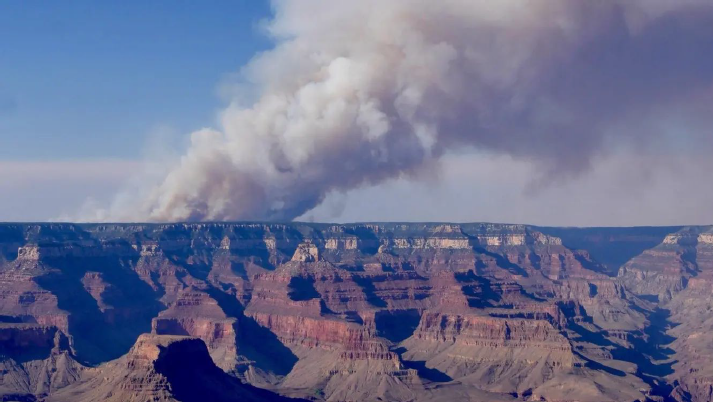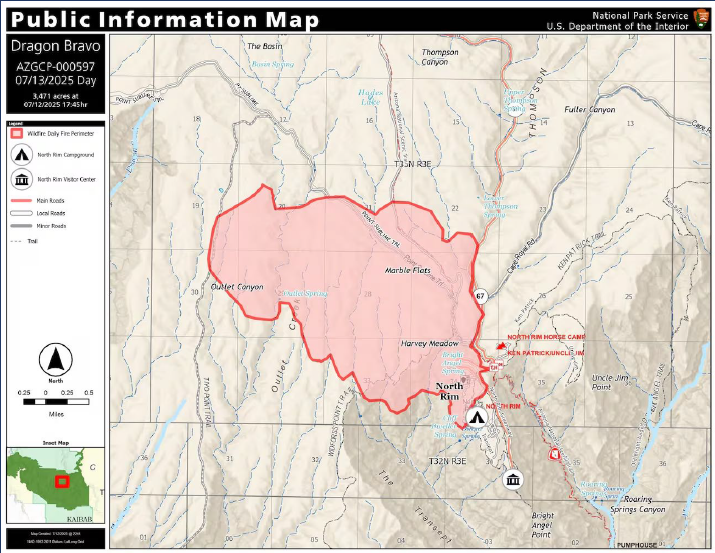July 15, 2025
On July 12, a wastewater treatment plant burning in the Dragon Bravo fire released chlorine gas at the Grand Canyon’s North Rim. The National Weather Service’s Weather Forecast Office in Flagstaff created HYSPLIT model dispersion runs for the chlorine gas and sent them to Coconino County officials and the National Park Service. Officials used that information to evacuate firefighters on the North Rim and hikers in the inner canyon.
The chlorine gas further hindered fire fighting efforts in the area due to the inability to use fire retardants. Mixing chlorine gas with fire retardants is very dangerous as there is great potential for explosive reactions. It reacts with organic compounds that can be found in fire retardants to produce hazardous gases and chemicals.
HYSPLIT is the Air Resources Laboratory’s atmospheric transport and dispersion model. It can accurately forecast where chemicals, smoke, dust, ash and even radioactive materials will travel through the air by taking into account weather conditions and how the specific material reacts and disperses, among many other factors. It is one of the most widely used models of its type by the atmospheric sciences community and is regularly used by Weather Forecast Offices across the country at the request of local and state emergency managers.
Lightning ignited the Dragon Bravo fire on July 4 and powerful winds helped the fire expand 500 acres over the weekend and to over 3,000 on the 12th. In addition to the waste water plant, several other historic buildings, including the Grand Canyon Lodge which opened in 1928 were lost.



